I guess I should explain what this article is about after that title. Basically, I’m not a huge fan of sideboarding guides.
I’ll usually just skim over them looking for any nuggets of wisdom or interesting card choices. For the most part, how to sideboard seems fairly obvious if you give it a little thought. The part they can’t easily cover, where it matters what your specific opponent is doing, is the hard part.
But it seems people really enjoy sideboarding guides. Do they give understanding about the format from the author through some form of osmosis? Probably, but not on a very deep level. Everyone wants to have the easy answers delivered by a good player, but there usually aren’t easy answers. The skills and understanding are best arrived at by playing and thinking about the cards yourself.
So the question is, what’s the best way to make a sideboard guide that sets the reader up for success?
First of all, sideboard guides are useful for providing basic information, a framework for how the deck operates. But what are the skills needed for gaining an understanding about the format and making your own personalized sideboarding guides?
The Map and the Territory
Yo Dawg, I heard you like sideboarding guides, so I wrote a sideboarding guide about sideboarding guides so you can sideboard while you sideboard.
Sideboarding guides are about conveying information: what cards to swap against what matchups and possibly adding a little information beyond that. The problem with them is they are condensing too much information into “In and Out.” They are quick and dirty. We want our hamburgers hot, our cars fast, and our PTQ wins right now. This mentally may work to a certain threshold, but it will stunt your overall growth as a player.
I would say 80% of sideboarding is pretty easy. One card can turn a nearly unwinnable matchup into an easy victory and it’s generally obvious which cards those are. Bring in Stony Silence against Affinity and counters against combo and control decks.
It’s the last 20% of sideboarding that is very difficult where a guide can be more of a crutch. Hijacking a good player’s mind as a springboard is useful, but you’ll usually have to reverse-engineer a bunch of information if it isn’t obvious or told to you directly. If you’re told things as opposed to learning by playing or coming up with an idea yourself, you’ll miss out on developing card evaluation skills.
The deck (and to a lesser extent the person) across from you is what really matters. A sideboarding guide telling you what to do against the archetype you face is a map. What it doesn’t tell you is how to prepare against the actual 75 cards your opponent has and that’s what you need to be figuring out when you’re playing.
Constant Vigilance!
Imagine you and your opponent are playing a constructed format where you each have a sideboard of four copies of every card in the format and you can swap your deck with any number of cards. Essentially, you are able to play anything.
Sideboarding in this format would be a very hard guessing game.
You’d ask yourself questions like: What are the best decks in the format? How skilled are you at playing each deck? What about your opponent’s skill level? Will they play a similar deck, an opposite style, try and counter what they think you’ll choose, or play the exact same deck again? It would be impossible for ten of the best Magic Players locked in a room for a week to consider every variable, let alone one player in three minutes.
Sideboards are also a bit of a guessing game, just a greatly narrowed-down one. There will be certain cards you expect them to bring in, based on the metagame, cards good against your deck, powerful cards in their colors, and cards you’ve seen in other similar decklists.
The better you can hold the entire format in your mind, the better you can predict what your opponent will do based on the cards you’ve already seen. Tainted ideas hurt your chances of guessing correctly. Sometimes preconceived notions mesh with reality and your mind quickly molds around how things should be done. Other times it might take a little mind changing, massaging, and smoothing to develop a strong understanding of the things at work.
Think of yourself as a Magic Playing Machine, you can “program” yourself before the tournament by practicing… and everything you do right, all the correct assumptions you make, will increase your probability of winning. Bringing in a strong set of assumptions for how to sideboard and then updating them based on the cards your opponent plays is the essence of sideboarding.
Alright, let’s move past the ephemeral bullhonkey explanation onto what you should actually be doing.
The Last Sideboard Guide
There is plenty of advice on sideboarding but here’s a quick rundown of the basics for sideboarding, building, and tuning:
Most sideboard cards are either answers to threats, answers to answers, or unexpected/powerful threats. Generally you want a sideboard full of haymakers that will have a huge impact on the game and cards that are powerful against a bunch of different decks.
The key to a tuned sideboard is having enough cards to bring in and out for each matchup you expect to face. Not too many, not too few. Although you won’t be able to make your deck configuration ideal, you will preferably not have to run many bad cards against the main matchups post-board. (For example, needing to keep in Doom Blade or Supreme Verdict in control mirrors.) Ideally, this is done by playing against all the decks you expect to face and adjusting cards over time. This will give you intimate knowledge of how your cards perform in each matchup. If not, go through what your plan is on a dry run. (AKA: Make a sideboarding guide.) It’s OK to sacrifice a matchup as long as you are aware you’re doing so.
Know what your game plan is post-board for all the major decks in the format. Attrition or beatdown. Transformational creature or combo plan to catch people off guard. Are there key interactions you need to be aware of? (Like leaving up Skullcrack for when they Sphinx’s Revelation.)
It’s important that you thought about each card and its place in your sideboard (or maindeck). Just by questioning a card’s role in your deck, you may answer questions you didn’t even know you had. Maybe you are bringing in certain cards rarely and the matchups you bring it in against it isn’t even that powerful. You will find a bunch of cards to cut this way.
Some decks sideboard better than others. Linear strategies like Burn or dedicated combo don’t have as much room for changes to the maindeck before their core plan becomes compromised. These decks will look to side in haymakers that have the potential to almost single-handedly run away with the game, cards like Blood Moon or Defense Grid. It may also make slight upgrades to cards, like replacing Lightning Strike with Skullcrack or Searing Blood.
Once you have internalized how the cards in the format interact and have a basic map made in your head of what your sideboard should be looking to accomplish, you can adjust and make changes easily. You’ll know where the load-bearing beams in the house are and can redecorate easier.
Level-one sideboarding strategies: My opponent’s maindeck plan is X. I want to bring in Z to counter X. (Example: My opponent has many Planeswalkers, I want Detention Spheres and Pithing Needles.)
Level-two sideboarding strategies: Takes into account what your opponent’s sideboard plan probably is. (Example: He knows I know he has Planeswalkers, and that I want Detention Spheres and Pithing Needles. Therefore he will bring in Abrupt Decays for my Detention Spheres and Pithing Needles. Instead of those I’ll bring in Negate and Planar Cleansing for his Planeswalkers, a worse answer, but one that will leave his Decays dead in hand)
How to physically sideboard: Put all the cards you might want to bring in to the bottom of your deck. You can bring all fifteen to the bottom but don’t worry too much about shuffling your entire sideboard in to your deck so your opponent can’t tell how many cards you’re changing. As a general rule, focus on what you’re doing until you have it down, then you can worry about what your opponent is doing. Next, search through your deck for all the cards you might want take out. Make the obvious cuts first and then take some time to consider what your opponent is doing. Make the last cuts and give your deck and sideboard one last quick check to make sure everything is in order. Pile shuffle your deck to make absolutely sure you have the right number of cards. Congratulations, you just sideboarded!
How to predict what your opponent’s plan is: This is where a deep knowledge of the format comes in handy. It’s especially useful to have tested the deck your opponent is piloting. Even if you haven’t played their deck, you’ve probably seen it or read about it. If you have expertise playing your deck, you should have a good idea of what they don’t want to see on the other side of the table. This can even make you able to pilot a deck you’ve never played before decently if you’ve played against it a bunch. (For example: If you play a bunch of Control vs Mono Red you’ll actually find that you can play surprisingly well just picking up Mono Red because you know what the control player is capable of and likely representing based on the way they play.) Sometimes you can hedge your bets if you aren’t sure what your opponents post-board plan is and they have multiple options by bringing in general answers to everything like counters. When in doubt, plan for the most common scenarios. Try not to go overboard against sideboard plans that have fallen out of favor or ones your opponent hasn’t shown you yet. (For example: If you suspect your Storm opponent could sideboard into Deceiver Exarch + Splinter Twin combo, don’t leave in all your removal just on a hunch, especially when that plan rarely ever shows up anymore.)
When you’re netdecking, you’ll have a finished product with no explanation for the individual card choices. How do you figure things out without a guide just by looking at someone’s list? This is where a strong intuition comes in handy. Learning new formats I will often find myself thinking, “It seems like he has a trick here but I don’t know what that trick is.” and walk face-first into the trick. Then it’s burned into my mind. After I’ve walked into the same type of trick enough times it’s easier to avoid even in new formats. Test out netdecks and try and think about why each card is in the deck. Sometimes there won’t be a good reason, sometimes you’ll be surprised by how good a cards is. Try building the Lego by the instructions before mashing four lists together to create your own Death Star / Medieval Castle / Pirate Ship / DeLorean with a trapdoor. Try everything once. Keep what works, change the rest.
Use a sideboarding guide as training wheels. If you keep playing and learning, they will be less and less necessary. You’ll begin to develop useful shortcuts like “control decks don’t like to play against haste creatures and uncounterable spells” or “Strong midrange decks often have the best sideboards and weak Game Ones.” Theory, then action, then update your theory.
The Sideboard Test
I don’t think it’s that hard to figure out how to sideboard just by looking at a list. Let’s see if we can come up with similar sideboard guides as skilled players who know their decks. You can play along at home.
Let’s take a look at the list of Jund Monsters that Brad Nelson wrote about here.
Creatures (24)
- 3 Scavenging Ooze
- 2 Ghor-Clan Rampager
- 4 Elvish Mystic
- 4 Polukranos, World Eater
- 4 Sylvan Caryatid
- 4 Stormbreath Dragon
- 3 Courser of Kruphix
Planeswalkers (7)
Lands (24)
Spells (5)

Without looking at what Brad’s plan is, or my guess below, how would you sideboard vs Sphinx’s Revelation Control with Jund Monsters? No peeking!
.
.
.
I’m no expert on Jund Monsters, though I do have an idea what I don’t want to see from the control side. Here’s my guess:
Out:


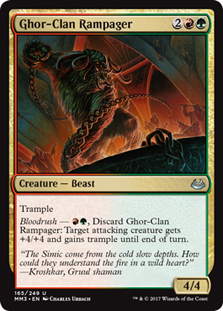

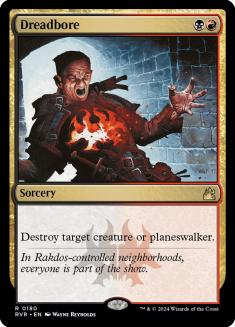


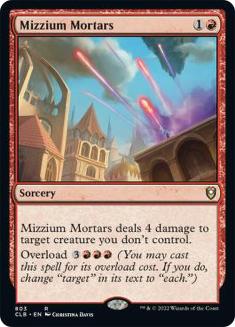

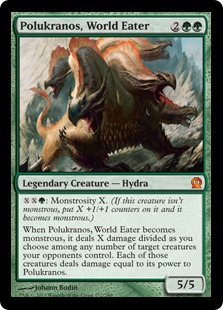
In:
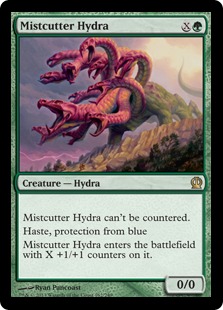



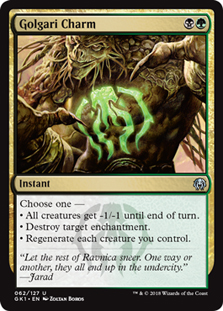

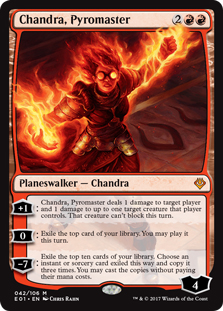
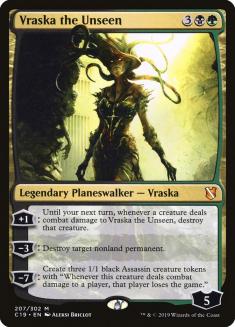
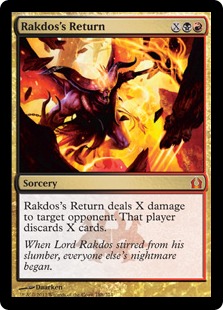

Not bad, just missed 2x Ghor-Clan Rampager being better than a Polukranous and Scavenging Ooze.
Let’s try one a little harder: Sam Black’s BUG Control list that I doubt many people have played.
Creatures (12)
Planeswalkers (5)
Lands (27)
Spells (16)
Sideboard

In the videos in that article, during round one he’s against Mono-Blue Devotion and sideboarding for game two while on the play.
.
.
.
My guess for sideboarding:
Out:
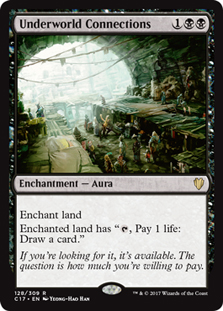


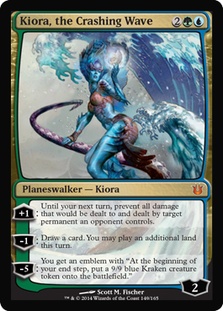


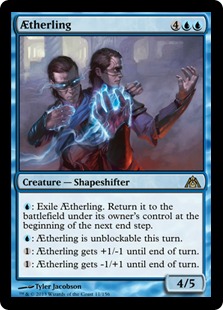
In:


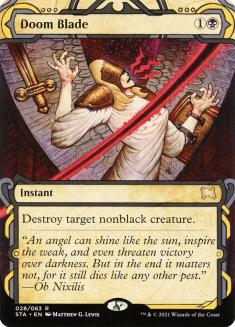
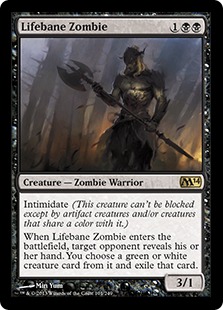


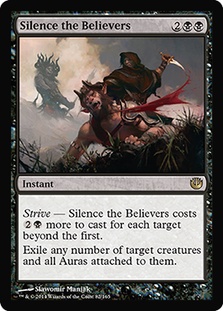
Not bad for never having played the deck, Sam’s differences from me are -1 Mutavault, – 3 Scavenging Ooze, + 1 Kiora + 1 Aetherling + 2 Golgari Charm. The idea is it’s more important to identify and understand the type of cards that are good and bad in certain matchups rather than focus on specifics.
What Does This Button Do?
The most commonly-asked question when it comes to sideboards: How do you sideboard against Deck X? Someone who asks that probably hasn’t thought about it that hard themselves.
If you can ask a simple, specific question, ideally one that can be answered Yes or No, not only are you more likely to get answered (since it takes less time) but it shows you have taken time to think things through to the point where you actually hit a snag.
Questions that require Complicated Answers are more likely to get a Bluurgh Answer. Many questions like this would take entire articles unpack all the thoughts about it and answer effectively.
If you don’t ask a Yes or No question, asking about specific cards in specific situations is good. Here are some potential examples of questions you could ask about Kiki Control:
Good Question – How do you feel about Vendillion Clique in the maindeck against Jund? I’m worried about it turning on Abrupt Decay.
Good Answer – It’s not great against Jund but it can pressure Liliana and see/disrupt their hand. They also usually Abrupt Decay your Wall of Omens anyways, so it doesn’t turn on Abrupt Decay for them completely. It also gets better post-board when they’re less likely to have Decay.
Bad Question – What do you think about Vendillion Clique?
Bad Answer – It is a 3/1 with Flash. I like Turtles and Faeries.
Good Question – Do you bring in Stony Silence vs Melira Pod?
Good Answer – Occasionally. It gets better on the draw when Mana Leak gets worse and they’re more likely to resolve an early Pod. It is also better if they have fewer graveyard cards so you can trim copies of Relic of Progenitus. I’ll usually bring in 0-1 on the play and 1-2 in on the draw.
Bad Question – How do you sideboard vs G/R Tron?
Bad Answer – Arrrrrrhhhhhhh Matey! Stonysilence. BLALALALA! Bluurgh.
Discuss cards and ask questions to clarify the last tricky parts after you’ve thought things through yourself.
The Hard Way
Well, for someone who claimed to not like sideboarding guides I apparently sure like talking about them.
Excessive use of sideboarding guides are akin to eating fast food: they get the job done but are unhealthy in the long term. Compare that to preparing every ingredient thoughtfully yourself. You may have a starting recipe, but it’s up to you to combine things and change what you don’t like until you have a dish that matches up to your specific tastes.
Use them as a starting point. From there, expand your horizons, innovate, make bold card choices and even bolder mistakes. Over time, these skills will become internalized. You’ll make fewer incorrect predictions about deckbuilding, sideboarding, and formats in general. You will cast off the scraps of paper that previously oppressed you! No longer will -2 Doom Blade, + 2 Negate hold you back. Follow your dreams, your heart, and your nose! Make mistakes and learn from them! Emerge not only a stronger Magic Player, but a stronger human being! Join me, Brothers! RISE UP! GO FORTH AND INNOVATE!
Ahem.
Counterpoint: Sideboard guides and netdecks are a good jumping off point for you to take things in your own direction. Also, if you want to get 80% of the value and just follow a guide to the letter, there’s absolutely nothing wrong with that. Not everyone will have the time, energy, or desire to worry about solving that last 20%.
I encourage you to take some time and figure things out for yourself. Every game you play, every card you evaluate, and every article you read is practice. Do things the right way even if it’s the hard way and you are building better skills.
That’s all for now. How do you feel about sideboard guides? Love em’, Hate em’, or Meh em’? Is there an improved way to discuss sideboard choices or individual cards, or is this setup good?
